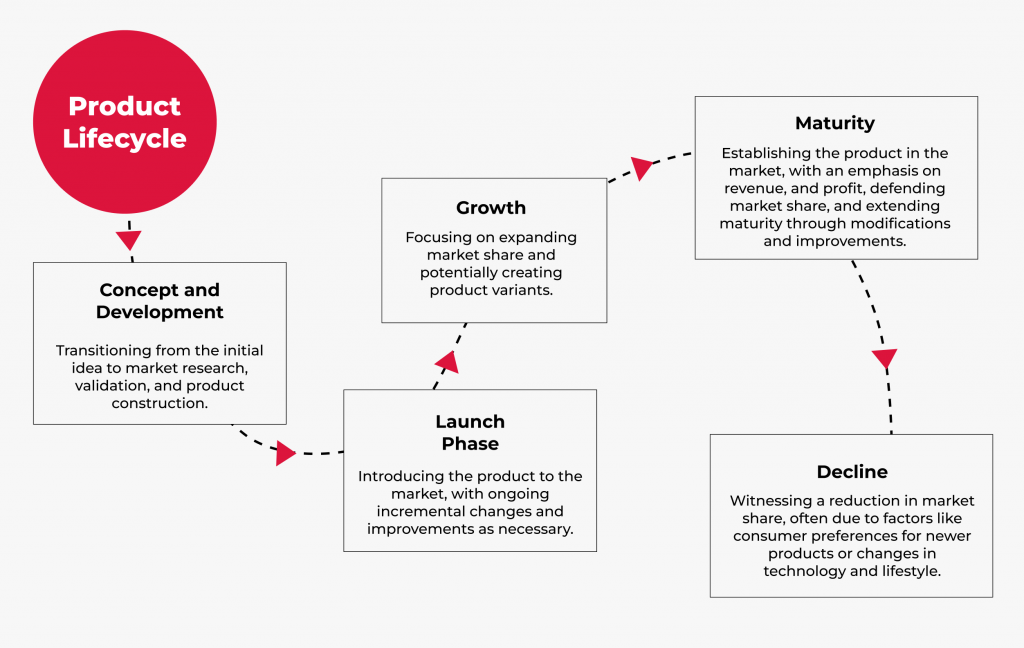The Agile product lifecycle emerged in the late 20th century as a response to the limitations of traditional software development methodologies, like the well-known waterfall model. These rigid approaches struggled to accommodate the dynamic nature of software development, often leading to delays, wasted effort, and customer dissatisfaction. At the heart of Agile lies the belief in continuous improvement. Teams can work in short sprint cycles, allowing them to gather feedback, make adjustments, and deliver value to customers incrementally. This iterative approach fosters a culture of experimentation and learning, leading to better products and more satisfied customers. Product engineering services play a critical role in enabling organizations to reap the full benefits of Agile PLM, leading to accelerated product development, improved product quality, enhanced collaboration, reduced costs, and increased agility. By partnering with experienced product engineering service providers, organizations can effectively implement Agile Product Lifecycle Management (PLM) and achieve their strategic product development goals.
Robust software development services are significant in the creation, deployment, and maintenance of software applications. They encompass a wide range of activities, from designing and developing software solutions to testing, deploying, and maintaining them throughout their lifecycle.
Agile Product Lifecycle Management is an iterative product development approach emphasizing flexibility, adaptability, and continuous improvement. It is a way of managing projects that breaks down work into smaller cycles called sprints. A working product is released at the end of each sprint, which is tested and improved upon in subsequent sprints.
Core Principles of Agile
PLM software is gaining traction across industries, empowering businesses to streamline product development and lifecycle management. Industries such as manufacturing, aerospace, medical, energy, and retail are embracing PLM software to enhance their product development and lifecycle.
The product lifecycle is a conceptual framework that delineates the various stages a product undergoes from its inception and development through to its growth, maturity, and eventual decline or replacement. This model is instrumental in guiding business strategies and decision-making processes, influencing choices related to promotion, pricing, marketing development, and cost management. By recognizing the current stage of a product’s lifecycle, businesses can tailor their approach to effectively address the unique challenges and opportunities in each phase.

From inception to design, manufacturing, and end-of-life, PLM software provides comprehensive support, enabling organizations to bring their products to market more efficiently and effectively. Let’s see how:
Individuals and interactions over processes and tools: Agile values the human element in software development. Teams can prioritize collaboration, communication, and trust over rigid processes and tools.
Working software over comprehensive documentation: Agile teams focus on delivering functional software rather than spending excessive time on upfront documentation. They believe that working code is the best form of documentation.
Customer collaboration over contract negotiation: Agile emphasizes building close relationships with customers. Teams involve customers throughout the development process, gathering feedback and ensuring that the final product meets their needs.
Responding to change over following a plan: Agile embraces change as a natural part of the development process. Teams are flexible and adaptable, ready to adjust their plans as requirements evolve.
Benefits of Agile
- Increased customer satisfaction: Agile’s iterative approach and emphasis on customer collaboration lead to products that better meet customer needs, resulting in higher satisfaction levels.
- Improved team productivity: Agile fosters a culture of collaboration and shared responsibility, leading to more efficient and effective teamwork.
- Reduced risk: Agile’s emphasis on incremental delivery and continuous feedback allows teams to identify and address potential issues early, reducing the risk of costly mistakes.
Best Practices for Adopting Agile
- Embrace short iterations: Break down projects into manageable sprints of two to four weeks.
- Involve customers in the process: Gather feedback from customers throughout the development cycle.
- Emphasize cross-functional collaboration: Form teams with members from different disciplines to ensure diverse perspectives.
- Conduct regular retrospectives: Reflect on each sprint to identify areas for improvement.
- Commit to continuous learning: Stay up-to-date with the latest Agile methodologies and tools.
Tools to Enhance Agile Adoption
Agile planning tools: Scrum.org, AgileCraft
CI/CD tools: Jenkins, CircleCI, TravisCI
Project management software: Asana, Trello, Jira
User feedback and testing tools: UserTesting, Qualtrics, Hotjar
CRM tools: Salesforce, Hubspot, Pipedrive
Collaborative tools: Slack, Microsoft Teams, Google Workspaces
How to improve Agile PLM
One of the core principles of agile is that the scope of a project is fluid. This means that the team can constantly reassess and refine the product vision based on customer feedback and market trends. As a result, agile product managers spend less time defining the product in advance and more time working with the development team to bring it to life one iteration at a time.
Avoid a ‘Lift-and-Shift’ Approach
Simply migrating existing on-premises PLM solutions to the cloud without re-engineering processes can hinder the realization of the full potential of cloud PLM. Instead, take the opportunity to re-evaluate and refine your PLM processes to align them with cloud-based capabilities.
Undergo a Comprehensive Transformation
Embrace a holistic transformation approach rather than incremental changes when adopting cloud-based PLM. This ensures that your organization fully leverages the benefits of cloud PLM, including access to cutting-edge technologies like digital twins, digital threads, AI, IoT, and high-performance computing.
Adopt Out-of-the-box Processes
Many leading cloud PLM solutions offer out-of-the-box processes that are based on industry best practices. Utilizing these pre-built processes can streamline your PLM operations, ensure alignment with industry standards, and simplify the implementation of updates.
By embracing these strategies, organizations can effectively harness the power of cloud-based PLM to enhance their product development agility, deliver innovative products to market faster, and gain a competitive edge.
Conclusion
The Agile product lifecycle has become the gold standard for software development, embraced by organizations of all sizes and industries. Its emphasis on adaptability, collaboration, and continuous improvement has led to the delivery of high-quality products that meet customer needs, resulting in greater success and satisfaction. As the pace of technological change continues to accelerate, Agile principles will remain essential for organizations seeking to thrive in the ever-evolving software landscape.

